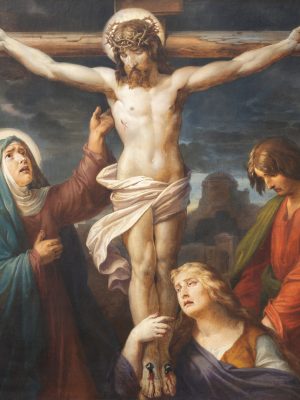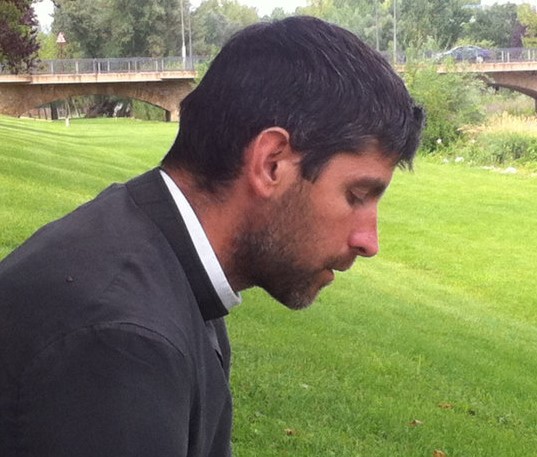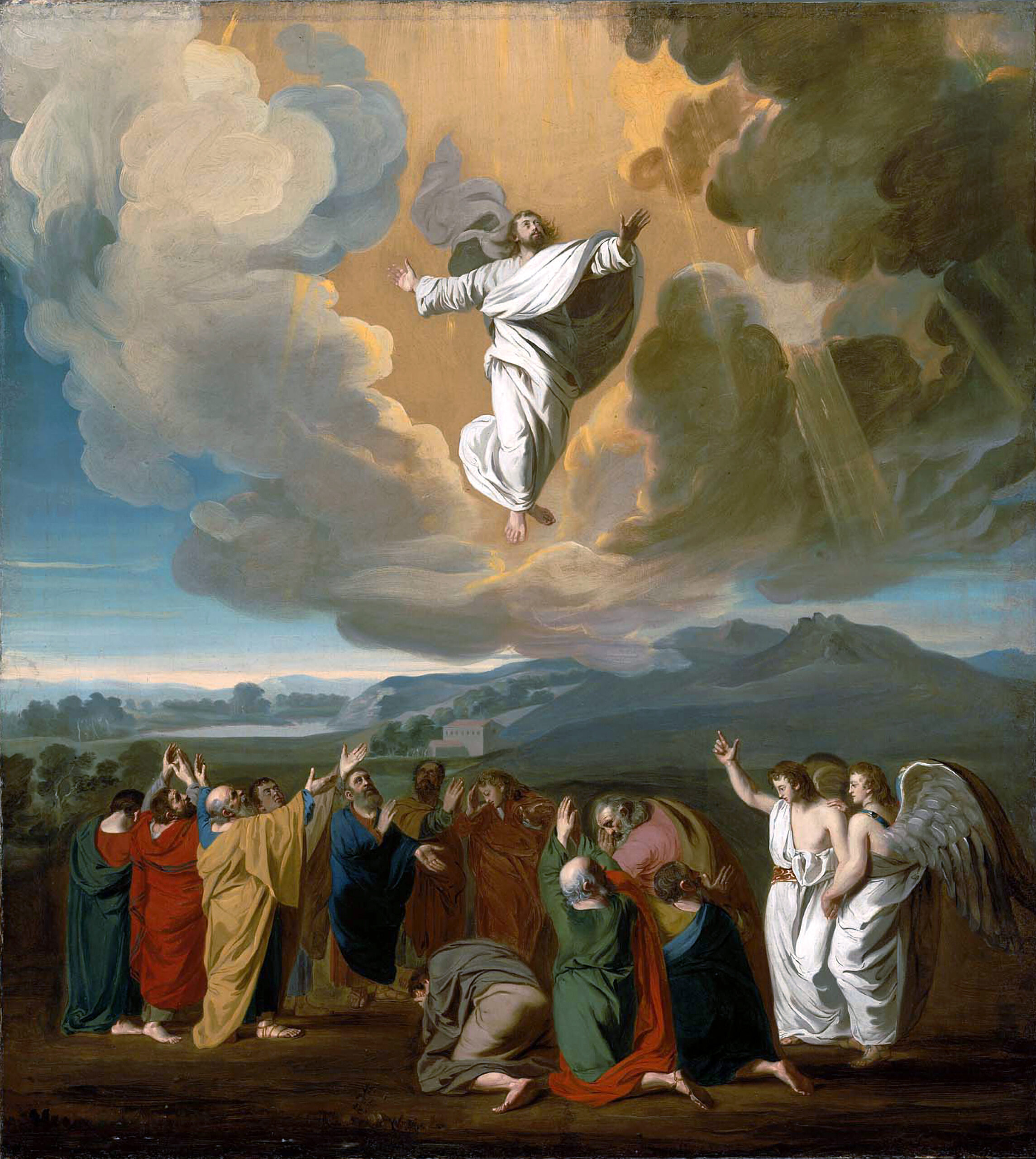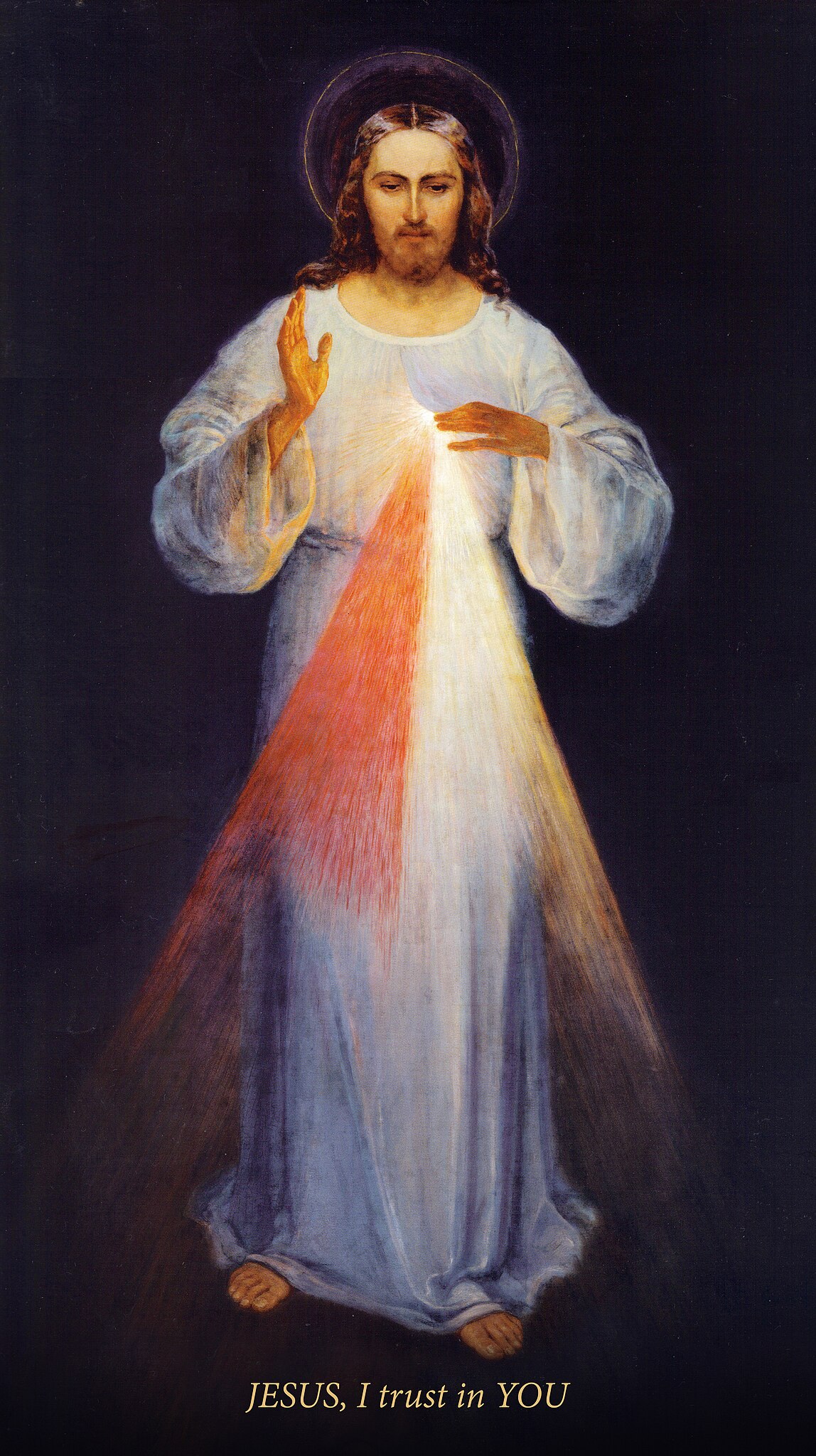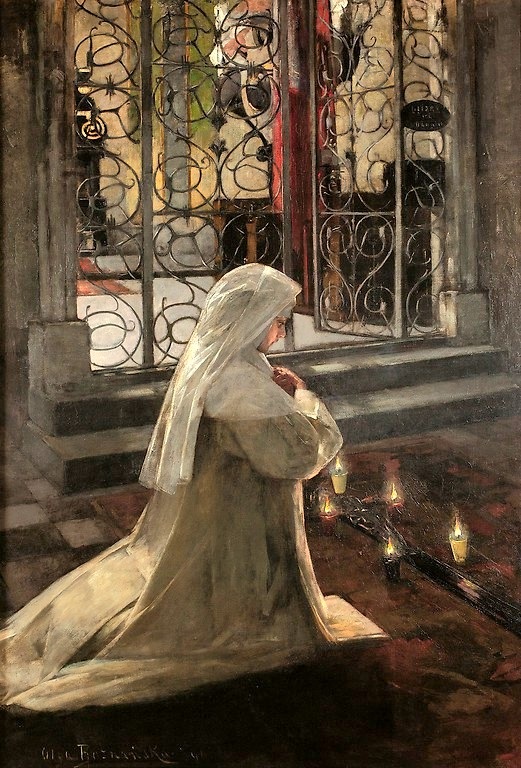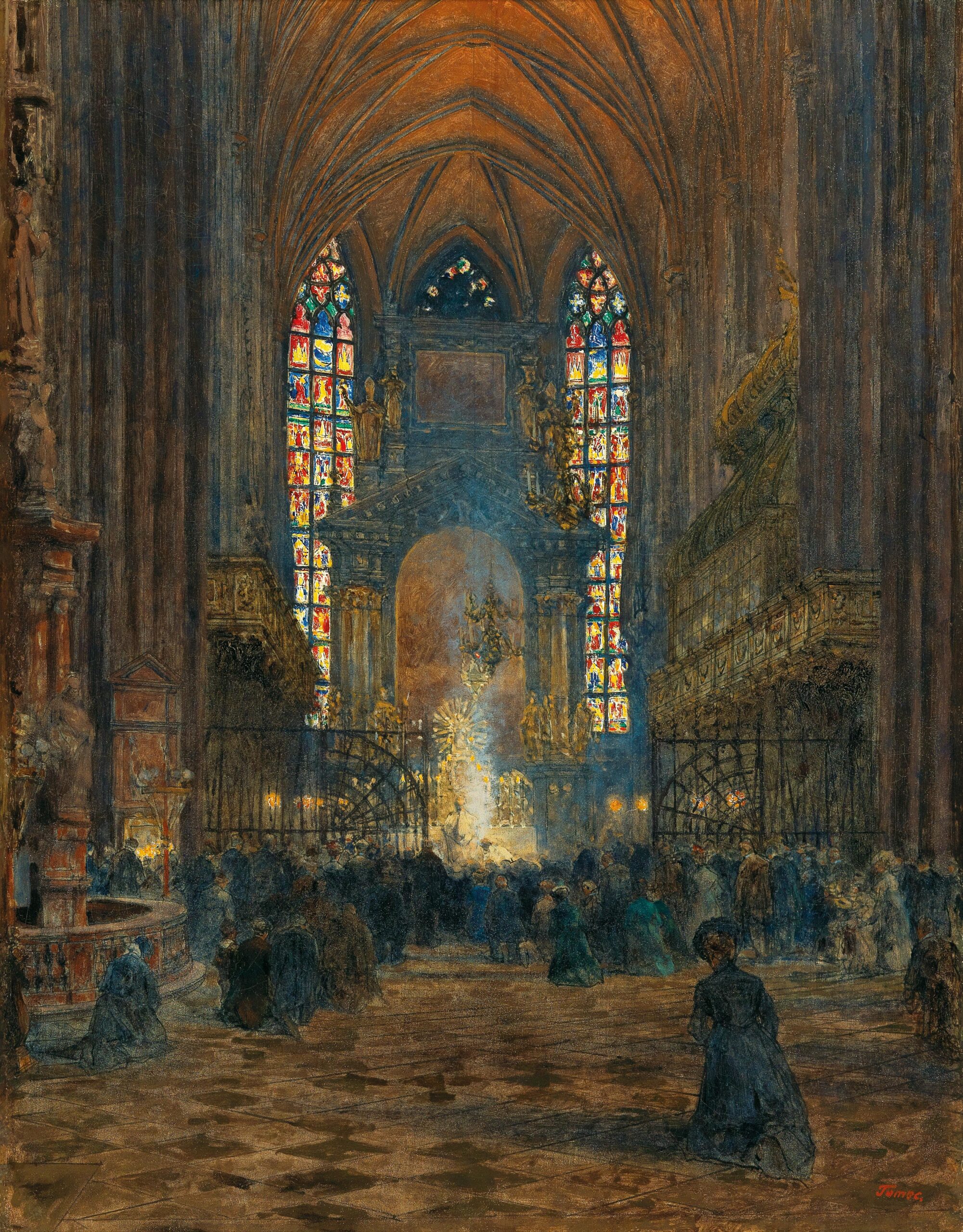In the modern age it seems obvious that the only way to make it through the narrow gate[1] and arrive in heaven is to make the total consecration to the Blessed Virgin Mary and meditate (in front of the Blessed Sacrament of the Altar if possible) for at least one hour daily (priests and religious) or at least fifteen minutes when possible (for laymen). Christ provides the example of greatest excellence by spending thirty years in obscurity with the Holy Family and by spending nights in prayer during his three years of public life. This remote and immediate preparation for his mission is a standard for each Christian. Even the eve before his crucifixion he spent hours in prayer asking his closest apostles to watch with him. “And there appeared to him an angel from heaven, strengthening him.”[2] A life of reparation, repairing the damage between our Creator and us creatures, strengthens souls for spiritual combat.
This preparation gives life to the apostolate, because we pray that God intervene in our lives to bring fruit to our spiritual efforts. “Our Lord saved the world even more by His heroic love on the cross than by His sermons.”[3] So too, when souls suffer their crosses in the spirit of reparation, their life brings salvation to other souls. The Blessed Virgin Mary as Coredemptrix, exemplified her greatest heroic virtue during her time under the cross, making reparation for the blasphemy around her then, and to the end of time. She received the title as Mother of God at the Incarnation, but especially under the cross: “…Woman behold thy son…He saith to the disciple: behold thy mother.”[4] Pope Benedict XV said, “Mary, in union with Christ, redeemed the human race.”[5] “Thus Mary became the spiritual mother of all men.”[6] Our Mother under the foot of the cross did not complain of all the harsh circumstances inflicting pain on her Son, laying on the cross, the mocking of the High Priest, and the absence of all but one apostle. No. Rather, she recognized the circumstances of Providence because she was faithful to a life a reparation.
The Life of Reparation in the Priest
The priest should will that he suffer as much as God wants him to suffer, nothing more or nothing less. If a priest lives this, he lives according to Providence and will bear much fruit. The priest should be a crucified man and one who is consumed with love of the Crucified. The best thing that God can give a priest is the cross. It is a great sign if a priest suffers much according to Providence, living his priesthood faithfully, for that means God loves him very much. Otherwise, his suffering would be one thousand times more painful in Purgatory and without merit, given that he has a positive particular judgment.
The Life of Reparation in All Those Who Have a Heavy Cross to Carry
Simple Christians ought to carry their cross in a spirit of reparation. The Blessed Virgin Mary was not a priest, but she penetrated the mystery of the altars more than did the Apostle St. John at his Masses. Because of her suffering, she rendered the apostolate of the Twelve fruitful. She is an example for every Christian, “…the nearer a soul is to God, that is, the more it loves, the more it is dedicated to suffering.”[7] Those who faithfully live out the total consecration to Mary, share in her spiritual motherhood, penetrating the mysteries of our age with its unique suffering. It gives souls the inspiration to want to save souls at the cost of no matter what suffering. But this story of suffering ends well. “This configuration to Christ crucified by the life of reparation is like the immediate prelude to eternal life.”[8] In other words, if we submit to God the amount of suffering he wills for us, it means that we are likely enjoying a constant conversation with God. All that we need to do is address Him and the Saints in a simple conversation.
El Cid and His Life of Reparation
Rodrigo Diaz “El Cid” (1043—1099) was a relative of St. Louis IX, King of France (1226—1270), who is one of the three patrons of the Archconfraternity of the Holy Face. He is one of the greatest legends in the reconquest of Spain from the Moors. His life was a constant battle. After he won a battle, another would come his way. His king and leaders constantly dishonored him. Although he sent 1,000 of the finest horses to his king, the king exiled him, even after having won the battle of Valencia. El Cid suffered the intrigues of the royal court, but he never lost a battle, because he gave all the glory to God.
In that infamous battle, El Cid defended Valencia from the fanatic Moors, although he was outnumbered thirty to one. As 150,000 Almoravide marched up to the gate, it was opened and one lone rider stood with his sword raised, exhorting: “In the name of the Creator and the apostle St. James, smite them, O knights, with right good will! For I am Rodrigo Diaz, the Cid from Vivar!”[9] The maneuver has come to be known as “la tornada,” or the tornado. He and his men rushed in one direction and then from another direction. At one moment the aggressor looked into the eyes of Rodrigo and they saw “…in them their own red ruin, and in that brief moment it entered into their hearts that they were defeated. The invincible Muslim horde turned their backs in flight.”[10]
How did El Cid win against all odds every time? He fought some one hundred battles during his lifetime! It was because he trusted in God and His Providence. He suffered from his king as he was exiled not less than twice. He was separated from his family off and on for years, which was surely a great hardship for him.
El Cid attracted the most skilled nights. He could have become a king easily, but he never pursued doing so because he did not want to offend God’s Providence. He knew that kings were crowned and chosen by God. He never wished to usurp God’s authority. He was a good man always just and pious; giving to the church some of spoils gained in battle. At one time El Cid’s cause for canonization was in process, but was forgotten. Eventually his life ended like that of Job, in peace and tranquility, because he always returned good after being treated with contempt and jealously.
Conclusion: This Life is a Valley of Tears—Reparation is a Wise Endeavor
An intense prayer life renders us capable of avoiding sin. Avoiding sin allows us to receive the lights from God that otherwise He withholds from sinners. These lights help us to see the profound awards of suffering and give us the charity to choose to endure them with longsuffering. Christ shared this secret with Sr. Marie de St. Pierre in the 1840’s at the Carmel in Tours, France. These revelations became the Archconfraternity of the Holy Face and today it is a league of souls who wish to make the most intense reparation for our times. St. Therese of Liseaux was one of the founding members.
Read: The Secret of the Holy Face: The Devotion Destined to Save Society. It was published in 2022 by TAN Books. Learn of a blueprint to guide us to attack the evils of today by means of a mystical combat. Here Jesus gives the weapons not for the death of sinners but for their conversion.
Join: The League of St. Martin
Join: The Archconfraternity of the Holy Face
[1] Mt. vii, 13.
[2] Lk. xxii, 43.
[3] Fr. Garrigou-Lagrange, Reginald, Three Ages of the Interior Life, Vol. II, Tan Publishers, Rockford , Illinois, 1989, p. 497.
[4] Jn. Ix, 26-27.
[5] Acta Apost. Sed., X, 182, Letter of March 22, 1918.
[6] Fr. Garriou-Lagrange, p. 497.
[7] Ibid., p. 500.
[8] Ibid., p. 502.
[9] Menendez Pidal, The Cid and his Spain, p. 355.
[10] Fitzhenry, James, El Cid: God’s Own Champion, Catholic Vitality Publications, St. Mary’s, KS, 2008, p. 156.


